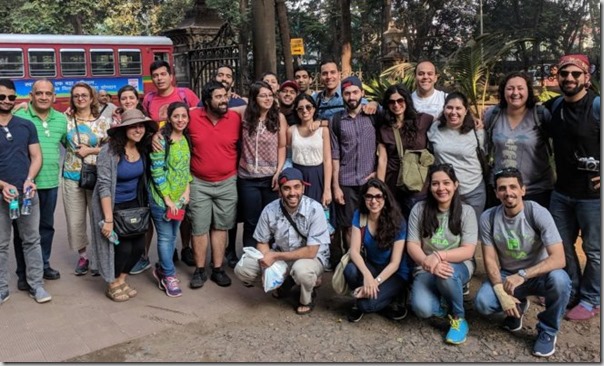The trip through Udvada, Navsari, Surat and Bharuch in Gujarat has helped the Zoroastrian youth from across the world get some answers about their religious identity.
By Asmita Sarkar | Little India
Twenty five Zoroastrian youth from across the world are in India for a “Return to Roots” program. The initiative, organized by Parzor, a New Delhi-based foundation that works with Unesco to preserve the community, culture, heritage and the Zoroastrian religion, is taking the group to the culturally significant locations in Mumbai and Gujarat.
The group, comprising youngsters from the United States, United Kingdom, New Zealand, Pakistan and other countries, is in India for the fourth installment of the program, which they said became popular due to word-of-mouth publicity.
The participants, along with volunteers and scholars, attended the Iranshah Udvada Utsav in Gujarat from Dec. 23 to 25, 2017. The Fire Temple festival is a celebration of the culture and religion of the small community. Parsis from all over the world come for the festival.
“The program has historical importance and it reinforces identity,” United States-based Arzan Sam Wadia, one of the organizers, told Little India. It will tell them how the Parsi community came to be in India, Zubin Gheesta, a Mumbai-based volunteer added.
The Zoroastrian religion has two strands, the Parsis and the Iranis. They originated in Iran, but left the country between the 8th and 10th century fearing persecution. The minority community is spread across the world, with the largest population being in India.
Among the participants this year is Anahita Partovi, an Irani woman from California, who wanted to see the other side of the religion.
“I didn’t know how they lived. This is a great experience for me. I knew some of the stories but now I can put them all together,” the 25-year-old student told Little India.
The essence of the journey for the group has been to come to terms with their identity. Living away from the community has been alienating for many of them and the trip — through Udvada, Navsari, Surat and Bharuch in Gujarat — has helped them get some clarity about themselves.
“The trip was fulfilling, it filled a gap in my identity. This was like a healing process and gave me whatever the immigration took from me,” said Tanya Hoshi from Toronto, Canada. Hoshi was born in Karachi, and lived in Pakistan till the age of 6 years.
In Canada, she went to religion classes every Sunday but did not feel a strong enough connection. Most of her peers grew outside the community. The India trip has been eye-opening, she said.
For others, it was interesting to see the first fire temple and the general upliftment of the society that the community is involved in.
Aubtin Yazdgardian from Vancouver, Canada, was surprised at the sophisticated fire temples in India. The country has two fire temples – one each in Toronto and Vancouver. The one in Vancouver, he said, was not open 24 hours but people come together during spiritual ceremonies.
Many among the Parsi youth, like many others across the world, are split between being involved in or remaining distant from religion.
For 27-year-old Samaya Master, however, there is no confusion. After growing up in New Zealand, she moved to United Kingdom for work, and currently works full-time towards organizing the World Zoroastrian Youth Leaders Forum to be held in March 2018. She was earlier part of the organizing team of the same forum in New Zealand, where the community is fairly new and has only 1,500 individuals, who live close to each other. “I met other young Zoroastrians and learned more about the religion during the India trip,” she said.
With India struck off the list of dream destinations, the next place that looms large for them is, of course, Iran. The desire is deep, plans are taking a firm shape, and all that remains to fall in place is a conducive political climate.
